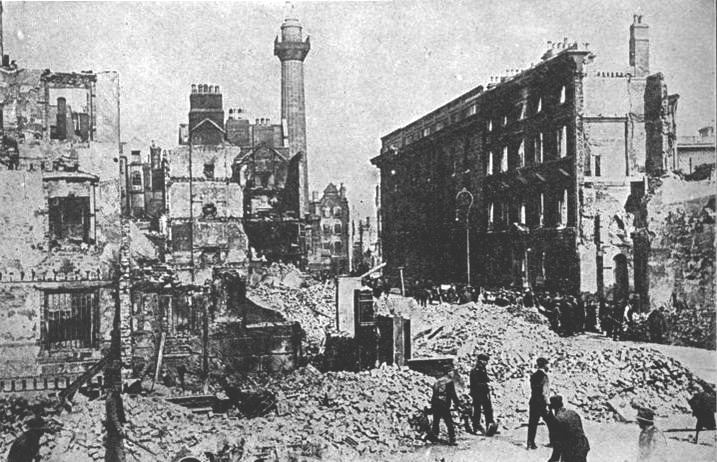The cover page : The assassination of Alexander II of Russia, 1881 (Wikipedia)
Beginning of Modern Global Terrorism
Dr. Rajkumar Singh
The concept of ‘Terrorism’ is as old as the civilization of mankind itself and has existed in all ages in some form or other which might be known anarchists, revolutionaries, fundamentalist or dissents against the established authority or even ruling tyrants having no tolerance or dissent. However, terrorism was not as widespread phenomenon as it is today in the contemporary political system of the world. Terrorism has, in fact, become a global phenomenon with increasing and rather well identifiable links between different terrorist group and organization. They use each other’s areas for recruitment and training, exchange of illegal weapons, engage in joint planning and ventures and also provide administrative and other logistic support. This type of terrorist activities show a new dimension due to circumstances characterized by the advancement of science, technology and diverse social, economic, political and historical reasons conditioning it. It will remain a menace as long as there are people who are driven by fanaticism, paranoia, and extremism. So long as there exists in the world poverty, strife, injustice, and oppression, conditions will exist which terrorists can turn to their advantage.
Initial Phase
The term terrorism comes from the French word terrorism, which is based on the Latin verb terrere (to cause to tremble). It dates back to 1795 when it was used to describe the actions of the Jacobin Club in their rule of post-Revolutionary France, the so-called ‘Reign of Terror.’ Jacobins are rumored to have coined the term ‘terrorists’ to refer to themselves. Terrorism refers to a strategy of using violence, social threats, coordinated attacks, to generate fear, cause disruption, and ultimately, brings about compliance with specified political, religious, or ideological demands. Traditionally, terrorism is a highly organized enterprise that fits into a clear political strategy. It has been filling the news for most of our lives and will doubtless go on demanding the attention of our children and grand-children as well. What is new is how it achieves its goals these days.
Until today the world under UN has failed to come to an agreement about what is an acceptable definition of terrorism. It is still under debate despite attempts made by many experts. The effort to approach terrorism from a definitional perspective has thus become a never – ending effort. ‘Terrorism is a term used to describe the method or the theory behind the process whereby an organized group or party seeks to achieve its avowed aims chiefly through the systematic use of violence. Terroristic acts are directed against persons who as individuals, agents or representatives of authority interfere with the consummation of the objectives of such a group. In a sense, it differs in several essential aspects of such phenomena as mob violence, mass insurrection, and governmental terror. Terror practiced by a government in office appears as law enforcement and is directed against the opposition, while terrorism in its proper sense implies upon defiance of law and is the means whereby an opposition aims to demoralize a governmental authority, to undermine its power and to initiate a revolution or counter-revolution.
As Revolutionary Technique
Terrorism as a revolutionary technique was for many years an accepted tenet of anarchism. The writings of Bakunin with their emphasis upon violence as a method of achieving social change were the inspiration, if not the actual source of this doctrine. The idea of the propaganda of the deed was developed in the years following Bakunin’s death by Kropotkin, Brousse, and others, who stressed the failure of generally accepted methods and the educative and publicity value of acts of terrorism. This theory was translated into action principally in the last two decades of the nineteenth century. It was almost always part of the strategy of an armed national liberation movement, and in the colonial context, it usually worked in the end. The reason terrorism worked so well in anti-colonial struggles was that you did not have to defeat the imperial powers superior military forces to win. They were a long way from home, and there was a limit to how many lives and how much money the imperial government would spend to hang into its possessions. But the early, easy successes of terror tactics in the anti-imperial context left everybody with a substantially inflated notion of what the technique could achieve against an established national government with local roots.
With its initial success in several spheres, the concept of terrorism also gained other valuable characters such as mass realization and publicity. Even today terrorism as a method is always characterized by the fact that it seeks to arouse not only the ringing government or the nation in control but also the mass of the people to a realization that constituted authority is no longer safely entrenched and unchallenged. The publicity of the terroristic act is a cardinal point in the strategy of terrorism. If terror fails to elicit a comprehensive response in circles outside of those at whom it is directly aimed, it is futile as a weapon in a social conflict. In this phase and type of terrorism violence and death are not intended to produce revenue or to terrorize the persons attacked but to cause society or government to take notice of the imminence of large scale struggles. The terroristic act committed in secrecy by one person or several is conceived as the notice of what may be expected from mass action.
The fullest expression of the theory and practice of this terrorism is to be found in the functioning of the famous Russian revolutionary organization Narodnaya Volya, formed in 1879. In the same year it made an unsuccessful attempt to shoot the Czar and in the following year a revolutionary workman, Khalturin, succeeded in dynamiting the Czar’s dining room at the Winter Palace, where the royal family was to entertain a large official assemblage. But in 1881 Alexander II was killed by a bomb. Such an effective start encouraged the Narodnaya Volya, and its activity spread despite the efforts of the government to exterminate the organization at all costs. The newly formed Party explained its method of action in paragraph 2, section D, of its program, which defined destructive and terroristic activity as follows: ‘Terroristic activity, consisting in destroying the most harmful person in government, in defending the party against espionage, in punishing the perpetrators of the notable cases of violence and arbitrariness on the part of the government and the administration, aims to undermine the prestige of the government’s power, to demonstrate steadily the possibility of struggle against the government, to arouse in this manner the revolutionary spirit of the people and their confidence in the success of the cause, and finally, to give shape and direction to the forces fit and trained to carry on the fight.’
Apart from this terroristic commitment, the organization was crystal clear in matters of motivation and end. The motivation of the party was frequently stated in paragraph 1, Section V, of the same program which reads, ‘By this overturn, in the first place, the development of the people will be to proceed independently and in line with its disposition, and, in the second place, many purely socialist principles common to us and the people will gain recognition and be supported in our Russian life. It also stressed that the use of terror was not an end in itself, but only a means to effect the transference of power from the government to the people; that the party proposed to seize and retain power only until a form of popular government could be determined upon by a Constituent Assembly; and that it would not decree revolutionary reforms and impose its desires upon the people but on the contrary would aid the latter to express its will, to which the party would submit. In later years, although it was revived in 1901 when the Socialist Revolutionary Party came into existence and in 1917, upon the cessation of the temporary political alliance of the Socialist Revolutionary party with the Bolsheviks, it, however, never attained real success as a method of revolution.
 The Fenian Guy Fawkes by John Tenniel, published in Punch magazine, on 28 December 1867
The Fenian Guy Fawkes by John Tenniel, published in Punch magazine, on 28 December 1867
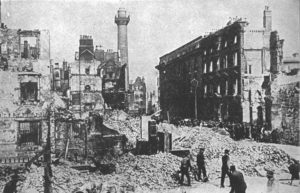 Rubble in the streets of Dublin after the failed Easter Rising in 1916 against British rule
Rubble in the streets of Dublin after the failed Easter Rising in 1916 against British rule
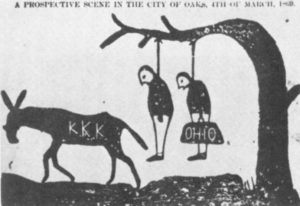 A cartoon threatening that the KKK will lynch carpetbaggers, in the Independent Monitor, Tuscaloosa, Alabama, 1868
A cartoon threatening that the KKK will lynch carpetbaggers, in the Independent Monitor, Tuscaloosa, Alabama, 1868
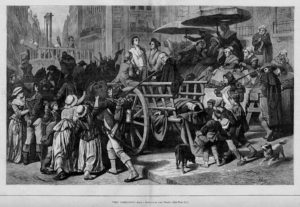 Enemies of the people headed for the guillotine during the Reign of Terror
Enemies of the people headed for the guillotine during the Reign of Terror
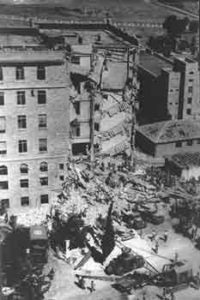 The King David Hotel, Mandatory Palestine, after the 1946 bombing.
The King David Hotel, Mandatory Palestine, after the 1946 bombing.
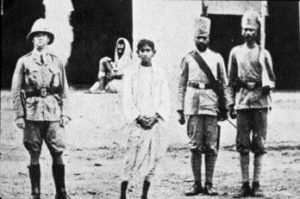 Khudiram Boshu) (3 December 1889 – 11 August 1908) was an Indian Bengali revolutionary, one of the youngest revolutionaries early in the Indian independence movement. At the time of his hanging, he was 18 years, 8 months and 8 days old.
Khudiram Boshu) (3 December 1889 – 11 August 1908) was an Indian Bengali revolutionary, one of the youngest revolutionaries early in the Indian independence movement. At the time of his hanging, he was 18 years, 8 months and 8 days old.
All images sourced from Wikipedia

